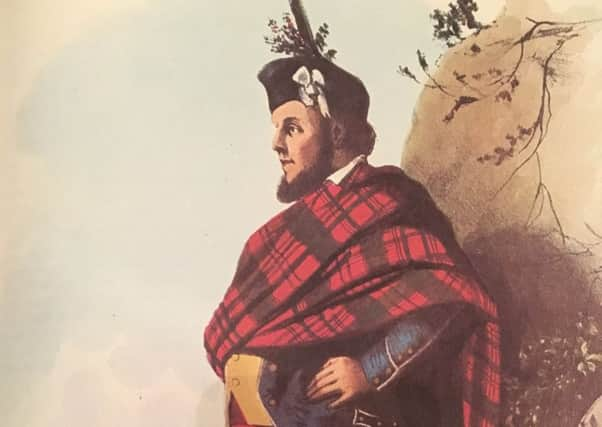The last battle fought by Scotland's clans


The Battle of Mulroy broke out in early August 1688 between the MacDonald and Mackintosh clans whose had lasted some 300 years.
Their last violent encounter is remembered for its classic downhill Highland charge and the use of the feared Lochaber axe.
Advertisement
Hide AdAround 1,500 men gathered at Maol Ruadh near Spean Bridge for the battle with the MacDonalds of Keppoch raising around 700 fighters which included back up from the Camerons of Lochiel and the MacMartins of Letterfinlay.
Leading the clan was Coll MacDonald, who had been studying at St Andrews University when he succeeded his father as chieftain six years earlier.
Meanwhile, the Mackintoshes gathered around 1,000 men for the battle. This included fighters from its Clan Chattan allies and up to 500 government soldiers from the Independent Highland Companies that were brought down from Inverness.
Under dispute was a stretch of land at Keppoch with the hostilities intensifying after clan chief Lachlan Mackintosh ordered the construction of a fort on the site.
The law upheld the land as his - with a parchment from the Privy Council to prove it - but the MacDonalds of Keppoch lay claim given the clan system’s right of long occupancy, continued improvement and successful defence, according to accounts.
As the construction of the fort continued, Coll MacDonald’s forces gathered, shielded by the hills of Glen Roy, according to Historic Environment Scotland’s inventory of historic battlefields.
Advertisement
Hide AdAs men mobilised, Captain Mackenzie of Suddie was dispatched from Inverness to give government aid to Mackintosh so he could fight his enemies.
For at least a week, the two mounting forces were kept apart by the high waters of the River Spean and Roy.
Advertisement
Hide AdBut in the first week of August, the Mackintoshes crossed the rivers to find “their enemies arrayed on good ground on the slope of Maol Ruadh, according to the HES account of events.
The account added: “The MacDonalds and their allies, who were positioned on the high ground, executed a classic Highland charge down the slope towards the Mackintoshes.
“While some accounts describe the MacDonalds discharging one volley before charging forward to meet their foes with drawn swords and Lochaber axes, another quite detailed account describes a fire-fight lasting for up to an hour.
“The fighting resulted in many casualties, including Mackenzie and several leading members of Clan Chattan, before the Mackintoshes were routed.”
The regular troops of Mackenzie’s force returned to their garrison at Inverness, carrying with them some of the wounded.
The MacDonalds captured Lachlan Mackintosh and his family, along with his possessions and supplies that had been moved to the old fort near Keppoch House, according to HES.
Advertisement
Hide AdMackintosh was forced into a written agreement regarding the tenancy of the MacDonald lands with the prisoners hastily released as soldiers prepared for their rescue.
HES said the battle was significant given it was the final major final major engagement which can be classed solely as a clan battle within Scotland.
Advertisement
Hide AdIts’ Inventory of Battlefields added: “Shortly after Mulroy is fought, the political climate is transformed by the so-called Glorious Revolution and the nature of clan life and warfare in the Highlands is transformed along with it.”
The MacDonalds faced a campaign of brutal reprisal until the Government forces were recalled in the build up to arrival of William of Orange and the removal of James VII.
While the Battle of Mulroy has been widely described as Scotland’s last inter-clan battle, some have argued that the involvement of government forces means that the last true battle was the Battle of Altimarlach, fought in 1680 between the Campbells and Sinclairs.
